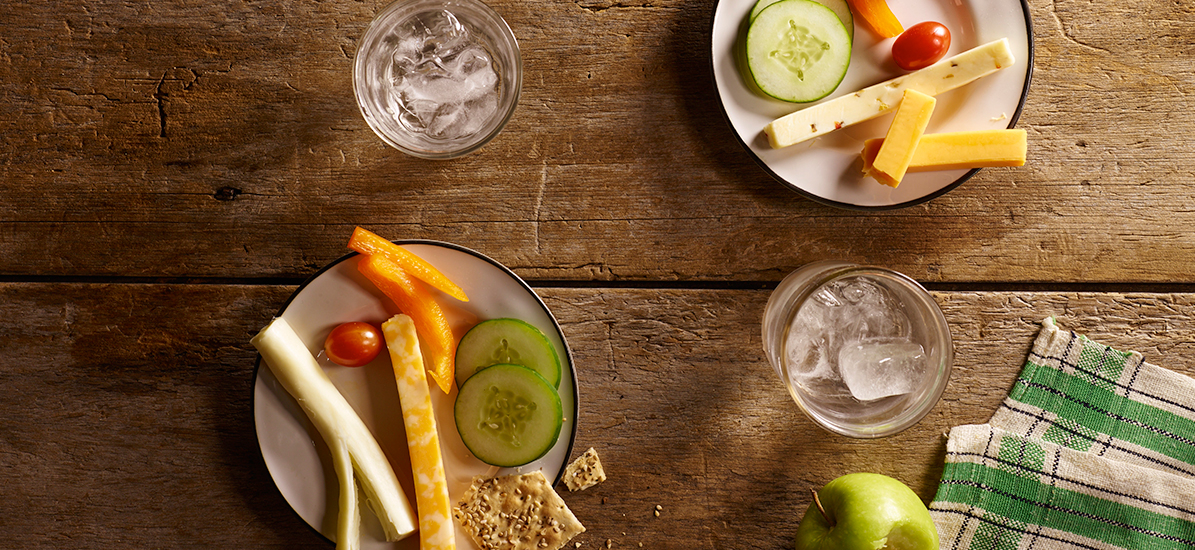
“Back to Work” Snacking: The good, the bad and the delicious.
As the summer winds down, it’s time for kids to go back to school. For everyone else, it’s the ideal time to get back into a healthful work routine. That routine not only includes what you’re eating at mealtimes but also what you’re nibbling on at snack times.
Here’s some bite-sized information about snacking that can help you get your between-meal eating habits back in check this fall.
Why Snack?
It may surprise you to know that snacking can lead to better overall diet quality as compared to not eating snacks!(1) In other words, when meals don’t supply the nutrients you need, snacks can help save the day. Because snacks provide opportunities to help fill nutrient gaps, focus on choosing nutrient-rich foods for these between-meal bites. For instance, if you have a challenging time getting your three daily servings of dairy at mealtimes, include milk, yogurt or cheese as part of your snacking regimen.
What’s more, snacks can also help curb hunger. Choosing snack foods that provide a “punch” of protein and dietary fiber can help boost satiety—the feeling of fullness.
When to Snack?
Surveys confirm that nearly all Americans snack at least once a day, and many at least twice a day. Whether it’s a mini meal instead of breakfast or an after-dinner snack, planning your snack times can help you avoid “mindless eating.” Listen to your internal hunger cues rather than simply eating between meals out of frustration, stress, boredom or just plain ol’ habit—all of which can lead to overeating and weight gain.(2)
Also be mindful of your food choices and portion sizes—don’t simply grab whatever you find nearby, like a little (or big!) bag of munchie snacks. Read the Nutrition Facts Panel to learn what a serving is of your favorite snack as well as its nutritional content.
What to Snack On?
The back-to-school season is packed with activities, and snacks that are quick to prepare and portable are key to help meet the demands of our hectic, busy lifestyles. Snacks should fit within your daily calorie needs, and most nutrition experts suggest that a snack provide between 150 to 200 calories. Try thinking outside of the “typical” snacks on occasion, and choose either sweet or savory picks, or a combination of the two.
Grab-and-go options like natural cheese snacks, fruit and yogurt are examples of convenient snacks that also come with nutrition credentials. Whether traditional or non-traditional, each of these delicious, nutrient-rich snacks provides 200 calories or fewer and a satisfying amount of protein and fiber.
Traditional snacks:
- A piece of Sargento® Natural String Cheese Snacks with 3 fresh figs
- 3/4 cup plain 0% fat Greek yogurt sprinkled with 3 Tbsp. granola
- 1/3 cup classic hummus with 1 cup cherry tomatoes
Non-traditional snacks:
- 1 scrambled egg combined with 6 baked tortilla chips and 2 Tbsp. Sargento® Shredded 4 Cheese Mexican - Traditional Cut
- 1 California roll (sushi) made with brown rice (6 pieces)
- 1 slice whole-grain toast topped with 1/4 avocado (mashed), 6 shrimp and squirt of lemon
Finally, while how we snack as a society is changing, it’s important not to abandon good eating habits. So put away your hand-held devices and simply savor your snacks!

Jackie Newgent, RDN
Jackie Newgent is a New York City-based chef, registered dietitian nutritionist, and media personality. She's the author of The With or Without Meat Cookbook, 1,000 Low-Calorie Recipes, Big Green Cookbook, and the award-winning The All-Natural Diabetes Cookbook. Jackie is also a recreational culinary instructor at the Institute of Culinary Education, freelance recipe developer for Food Network, and a frequent contributor to Health, Shape and Coastal Living magazines.